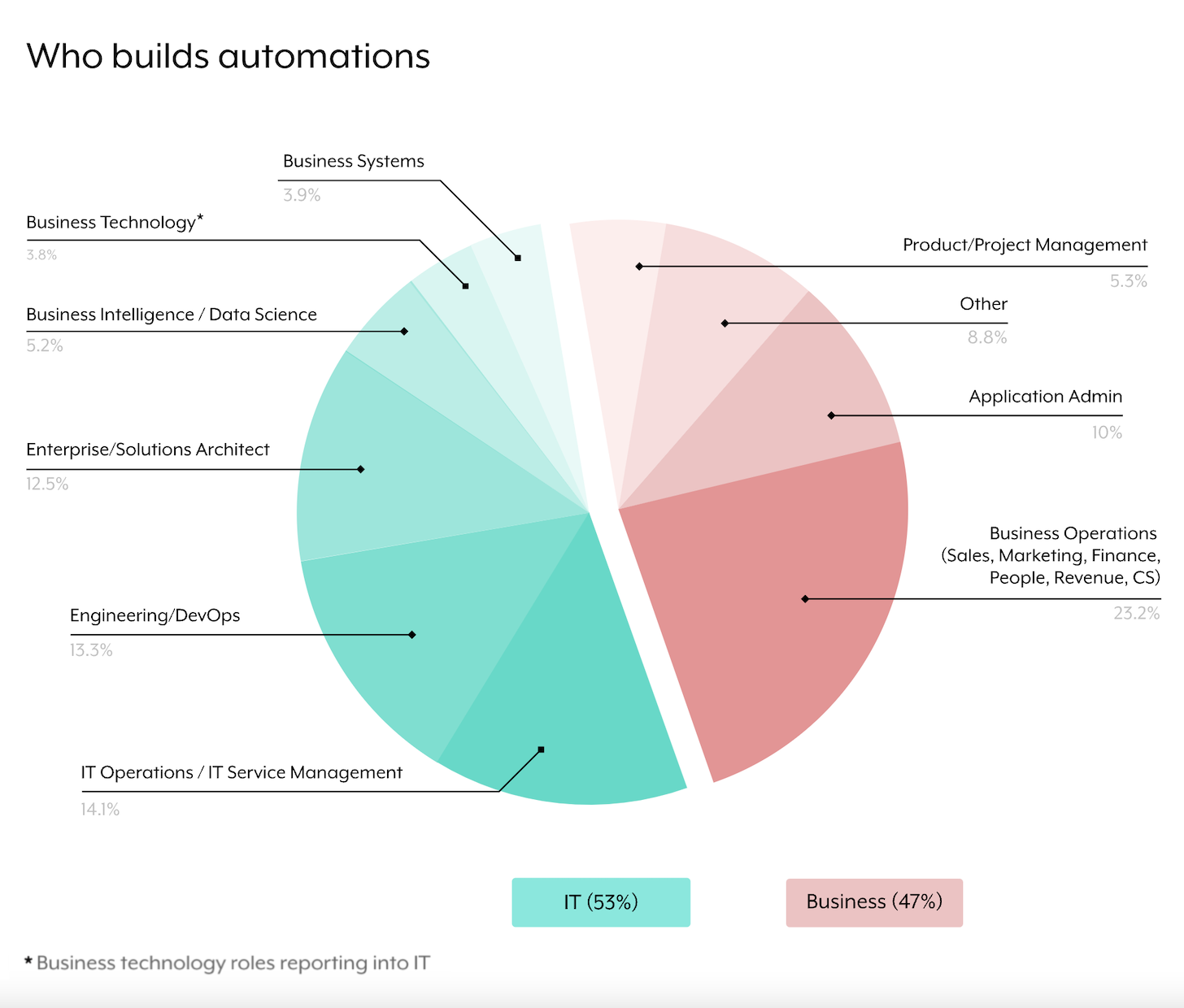
Apologies for the lull in putting up. I took a lengthy, a great deal-essential household holiday — practically totally digital-free. I’m now back again in the saddle, recharged and reenergized about all that is occurring in martech. With a large backlog of awesome points to share with you.
Here’s the first…
Organization automation company Workato (disclosure: I’m an advisor to them) a short while ago released their 2022 Get the job done Automation Index. It’s not a survey, but instead the aggregated knowledge from 900 of their midsize and business clients from February 2021 to January 2022.
In other terms, it’s the ground real truth of what a quite huge sample of companies are in fact automating. Tricky empirical facts, not tender biased viewpoints.
The very first obtaining that leaped out to me is the chart at the best of this post. Just about half (47%) of automations made on their platform were built by company consumers — not IT or engineering specialists.
This is about as resounding of an endorsement of the adoption of “no code” and decentralized engineering enablement as one particular could talk to for — all the more so since Workato’s buyers are usually large companies with powerful IT departments, not scrappy, remarkably-fluid startups.
I enjoy scrappy, highly-fluid startups, which have been the key consumers of most “no code” platforms. But they generally have considerably far more freedom in how they hustle than an set up organization. Some individuals have argued that these types of no-code, decentralized empowerment of non-IT professionals would not operate in a much larger enterprise with official IT governance. This knowledge from Workato quite strongly rebuts that argument.
Without a doubt, it’s the burgeoning category of non-IT “business operations” pros — marketing ops, sales ops, profits ops, CS ops, and so forth. — who are collectively building the greatest number of automations (23.2%). Large Ops is flourishing! This is in no tiny section mainly because Big Ops teams aid greater corporations adapt with the form of agility made use of by scrappy, really-fluid startup competitors who are trying to disrupt them.
This is not just a internet marketing ops factor both.
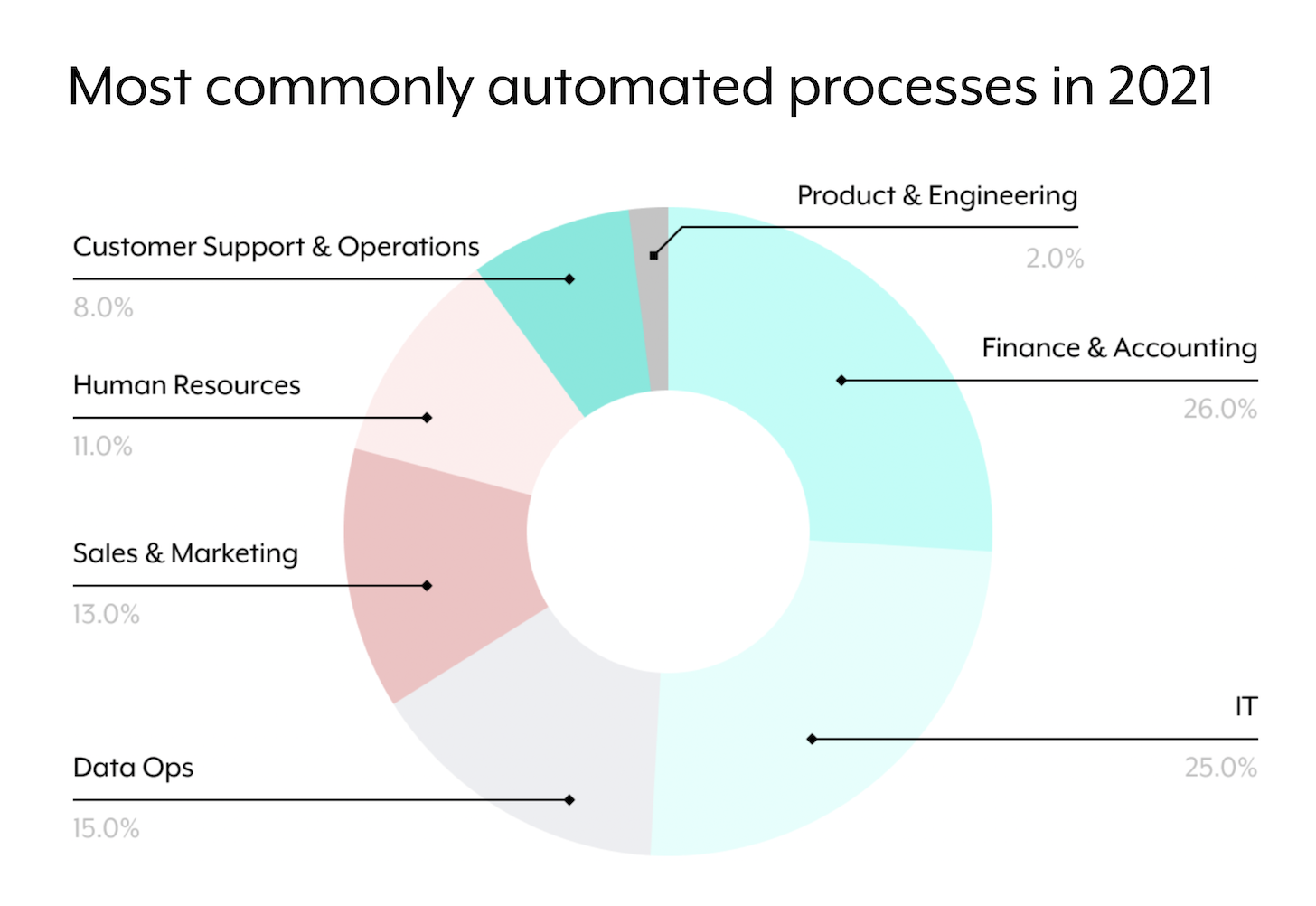
In point, advertising and marketing and sales rank third in the departments leveraging automation. The greatest variety of automated procedures in this index were for finance and accounting (26%). Revenue and advertising and marketing had half as a lot of (13%).
(Granted, this may be since Workato specially has a lot more adoption in just finance and accounting, as nicely as IT. If you component in all the automations that promoting ops and income ops use in their CRMs and MAPs, they probably have additional full automations. But the position is that this proliferation of enterprise automation is not special to advertising and product sales.)
So what are marketing ops execs automating? In this article are the significant-level clusters:
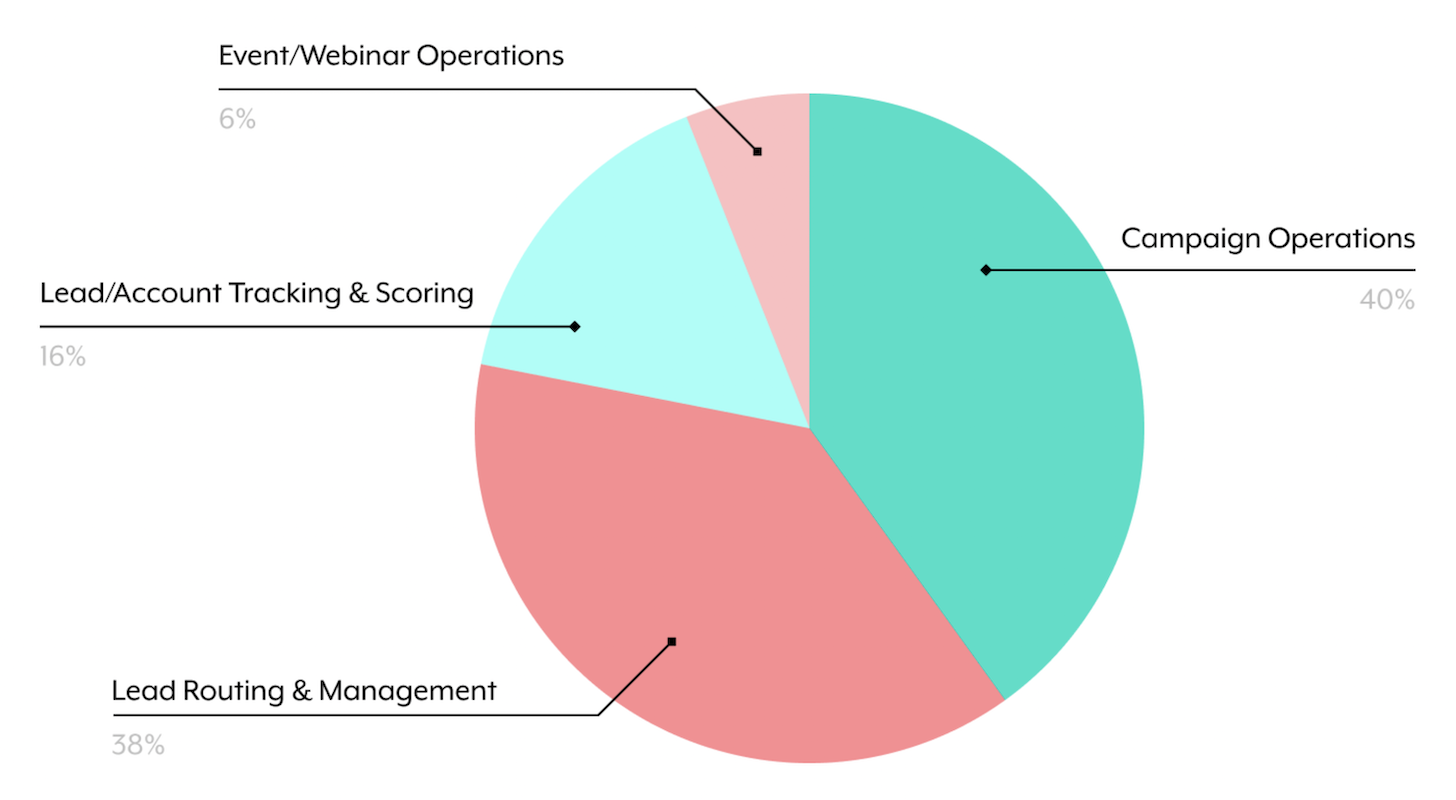
If marketing campaign operations sounds a small also obscure, Workato clarifies what’s provided:
“Everything in a marketing campaign not similar to qualified prospects, which includes creative & copy approvals, file storage, and capturing performance data. It may imply connecting CRM methods, marketing and advertising apps, and project administration equipment, allowing for groups to system, execute, and evaluate the effect of strategies. Automating marketing campaign execution procedures allows creative means steer clear of information entry and marketing campaign leaders take away guide measures from reporting.”
Curious about promoting ops’ cousins in sales ops and what they’re automating?
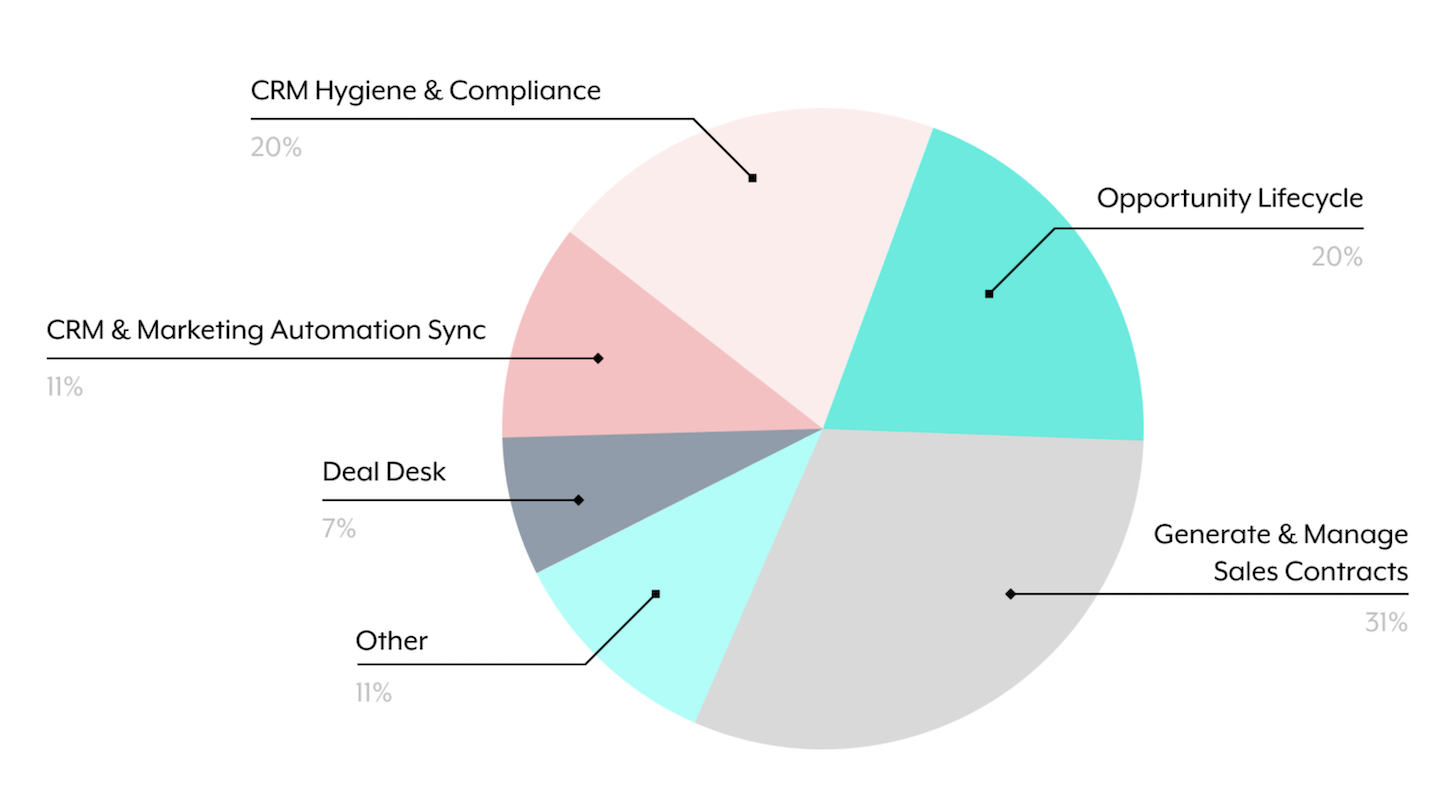
(I suspect that in a whole lot of businesses, quite a few of these “sales” automations are staying run — or at minimum co-managed — by the internet marketing ops group. Or, in these organizations who have a put together profits ops purpose, these neatly mix together underneath that umbrella.)
To close whole circle, here’s 1 extra intriguing stat from this report:
Whilst across the entire company 47% of automations were designed by enterprise users (as an alternative of IT), in just advertising and marketing and income that proportion jumped to 70%.
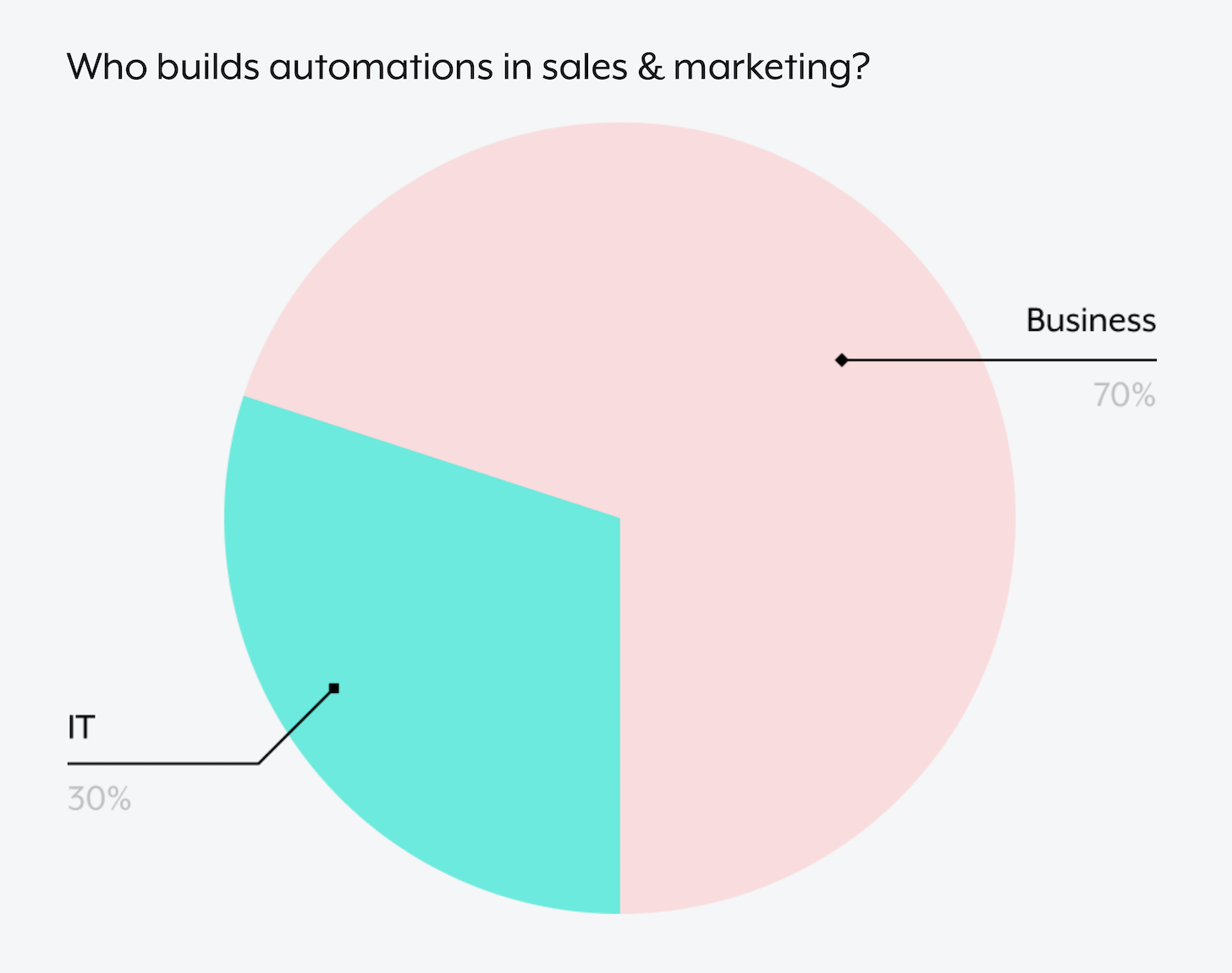
Which is one particular of the greatest ratios of company-user builders to IT builders of any division — with the exception of consumer good results, where by 72% of the automations are designed by company consumers: hand-offs from profits to buyer results, consumer onboarding and training workflows, automated consumer expertise and NPS surveys, etc.
Advertising, sales, buyer company: all groups in which the processes getting automatic revolve about the customer journey and rely seriously on the domain skills of ops leaders embedded inside of those people departments.
This is Big Ops incarnate.


More Stories
Transform Your Space: Discover the Incredible Power of a SmartHome Controller for Effortless Living
Unlock Your Smartwatch Potential: Embrace the Future with Lenovo S2 Pro Smartwatch
Empower Your Health: Take Control with HT99 Smartwatch by Your Side